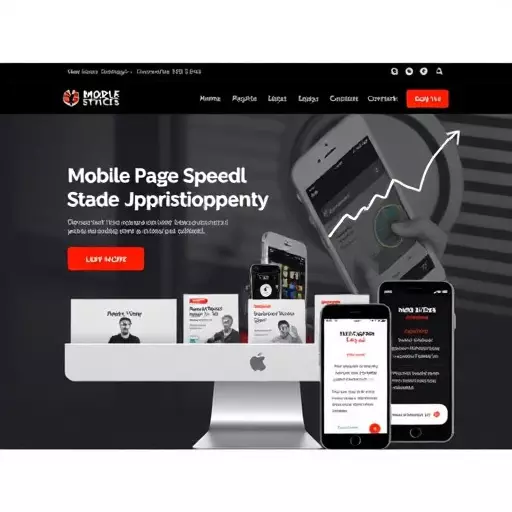New Jersey businesses aiming for digital success need responsive web design with a mobile-first approach. This strategy ensures websites seamlessly adapt to all devices and screen sizes, providing users with fast, engaging experiences. By optimizing mobile page speed using techniques like browser caching, CDNs, and image optimization, developers enhance user engagement, boost SEO rankings, and drive online success in today's mobile-dominated landscape.
In today’s digital landscape, a robust online presence is non-negotiable for businesses in New Jersey. Adaptive web design, built on responsive web design principles and mobile-first website development strategies, ensures your site delivers an optimal user experience across all devices. This article delves into the fundamentals of responsive design, explores the benefits of a mobile-first approach, and highlights critical aspects of mobile page speed optimization to keep visitors engaged and conversions high.
- Understanding Responsive Web Design: The Foundation of Modern Websites
- Mobile-First Website Development: A Strategy for Optimal User Experience
- Optimizing Mobile Page Speed: Enhancing Performance and User Engagement
Understanding Responsive Web Design: The Foundation of Modern Websites

Responsive web design, a cornerstone of modern digital strategy, especially in competitive markets like New Jersey, revolves around creating websites that adapt seamlessly to any screen size or device. This approach ensures that mobile-first website development isn’t just an option but a necessity, aligning perfectly with the way users interact with the internet today. By prioritizing mobile page speed optimization, developers can guarantee quick loading times, enhancing user experience and search engine rankings.
This adaptive design philosophy means that what you see on your desktop is not a static version of the site but a dynamically adjusted layout tailored for tablets and smartphones. It’s a far cry from the days when separate mobile versions of websites were the norm, leading to inconsistent user experiences. Today, responsive design offers a streamlined, efficient solution, ensuring that New Jersey businesses can reach their audiences effectively across all platforms.
Mobile-First Website Development: A Strategy for Optimal User Experience

In today’s digital landscape, mobile-first website development is no longer an option but a necessity for businesses in New Jersey and beyond. With the vast majority of internet traffic originating from smartphones and tablets, responsive web design that adapts seamlessly to various screen sizes has become crucial for optimal user experience. This strategy involves creating a single, flexible website that seamlessly transitions between different layouts based on the device being used.
By prioritizing mobile-first, developers can ensure faster page loading times, which are vital for retaining visitors and improving search engine rankings. Mobile page speed optimization techniques, such as leveraging browser caching, minimizing HTTP requests, and utilizing content delivery networks (CDNs), further enhance the overall performance of the site. These practices not only benefit users but also contribute to a better SEO strategy, making mobile-first websites a game-changer in the competitive digital market.
Optimizing Mobile Page Speed: Enhancing Performance and User Engagement

In today’s digital era, where a significant portion of internet traffic stems from mobile devices, optimizing mobile page speed is no longer an option but a necessity. Adaptive web design, especially in New Jersey, embraces responsive web design principles to ensure that websites seamlessly adapt to various screen sizes and resolutions. A mobile-first website development approach prioritizes the user experience on smartphones and tablets, recognizing that these devices are often the primary gateway to online information for many users. By implementing effective mobile page speed optimization techniques, developers can enhance performance and significantly improve user engagement.
This involves optimizing images, leveraging browser caching, minimizing HTTP requests, and employing content delivery networks (CDNs). These strategies not only reduce load times but also ensure that responsive web designs function efficiently across different platforms. As a result, users in New Jersey and beyond enjoy faster, more interactive websites, fostering higher levels of satisfaction and encouraging longer visits, which are crucial factors for successful online businesses.


